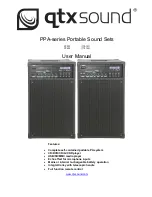
31
31
english
Function Description
Communication with the processor
1. The controller sends the processor the bit header with the RW bit and the AV bit. The RW
bit tells the processor whether to carry out a read or write job. The AV bit tells the processor
that there is a new job waiting. If a write job is carried out, the cont4roller imimediate sends
the write data to the processor.
2. The processor accepts the job and sets the AA bit. It accepts the values for the start
address and number of bytes to read or write from the device parametering. If the
processof carried out the job correctly, it sets the AE bit. If a read job was carried out, it
sends the read data to the controller.
3. In the case of a read job the controller takes the read data and sets the AV bit to 0.
4. The processor sets the AA bit and the AE bit to 0 - now it is ready for the next job.
Mode 1
: Please see
also
65...72 and
the examples on
73...76.
Basic Procedure
for Mode 2
C60_3-025_825645_1310_e.p65
32
english
32
Input and Output
Buffers
In order to transmit commands and data between the BIS C-60_3 and the host system, the
latter must prepare two fields. These two fields are:
–
the output buffer
for the control commands which are sent
to
the BIS C-60_3 and for the data to be written.
–
the input buffer
for the data to be read and
for the designators and error codes which come
from
the BIS C-60_3 .
These data ranges are exchanged between the controller and the BIS C-60_3 processor by
means of cyclical polling.
The polling I/O connection must have been successfully opened by the controller.
The possible setting values are stored in the EDS file.
The buffer size can be selected between 6 and 256 bytes. The parametered total buffer size
applies to both BIS modes (Mode 1 and Mode 2).
The distribution of the total buffer over the two read/write heads depends on which BIS mode
was selected.
When distributing the total buffer over the 2 heads, note in particular the explanations on
32...35.
☞
Function Description
Input and Output Buffers
☞
















































